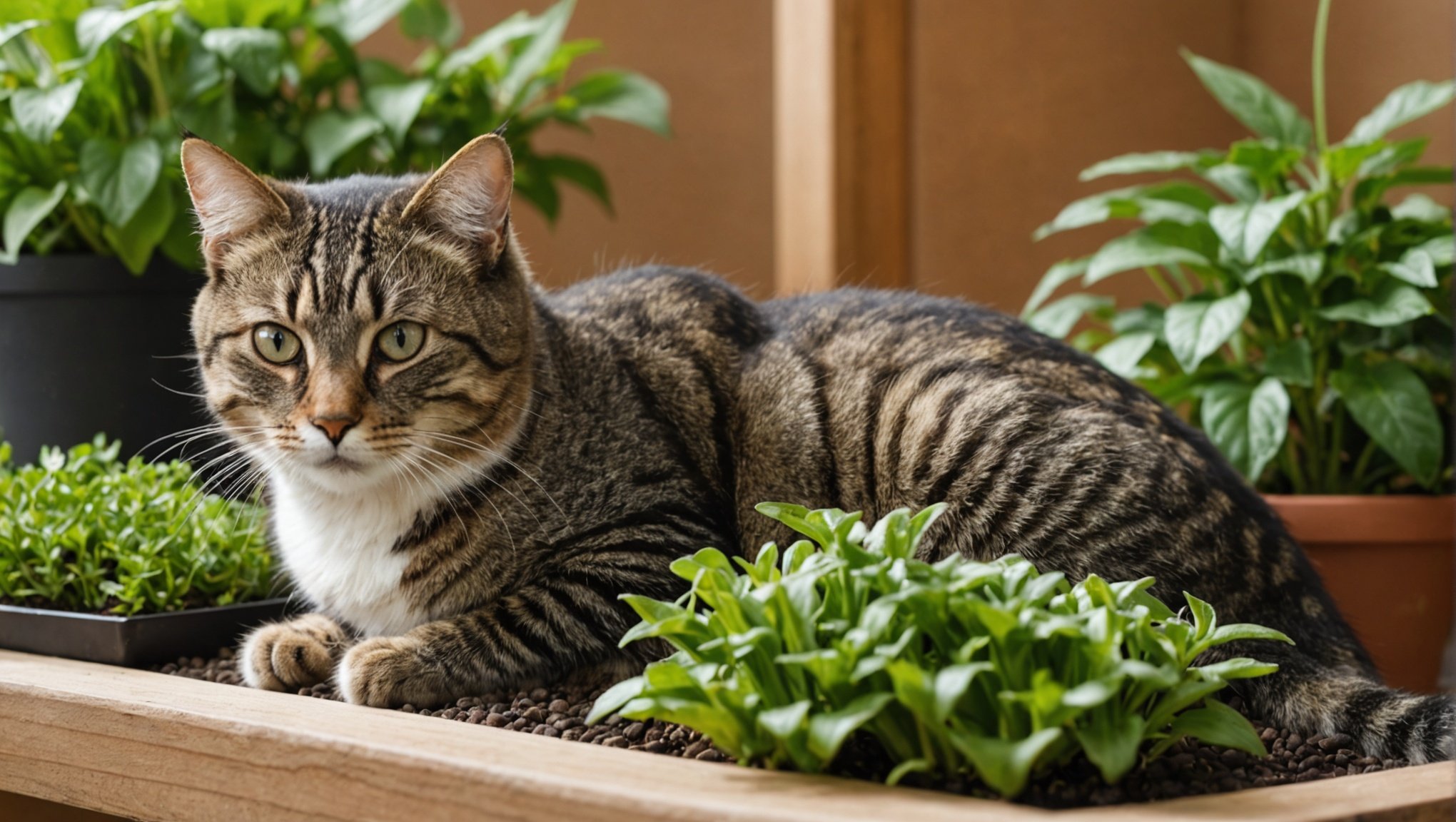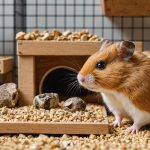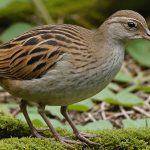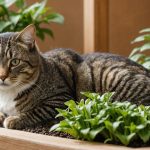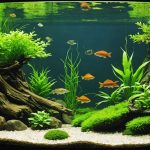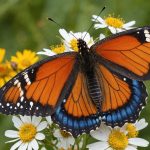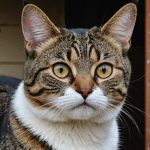Indoor cats deserve environments that stimulate their natural instincts while ensuring their safety. This guide walks you through key elements for creating an indoor cat garden that fosters feline happiness. From selecting safe plants to designing engaging play spaces, every detail plays a role in enriching your cat's life. Discover practical tips and innovative ideas that transform your home into a vibrant sanctuary, encouraging exploration and play while keeping your furry friend secure and content.
Importance of an Indoor Cat Garden
Creating an indoor cat garden offers numerous benefits for your feline friend. It can significantly enhance their mental and physical health. Cats are naturally curious creatures, and an indoor garden provides a stimulating environment that encourages exploration and play.
Dans le meme genre : Crafting the Perfect Safe Haven: Tips for Designing an Engaging Hamster Habitat in Your UK Home
Enhancing Feline Health
An indoor cat garden can reduce stress and anxiety in cats. By offering a safe space filled with plants and textures, it mimics the outdoors in a controlled setting. This can be particularly beneficial for indoor cats who may not have regular access to nature.
Fostering Natural Behaviors
Cats have inherent instincts such as scratching, chewing, and climbing. An indoor cat garden supports these behaviors, allowing them to engage with their environment naturally. It encourages activities that are crucial for their well-being, such as:
Avez-vous vu cela : Crafting a Flourishing Biotope Aquarium for Native British Freshwater Species: A Step-by-Step Guide
- Climbing and jumping
- Chewing on safe, non-toxic plants
- Scratching surfaces
Reducing Stress and Anxiety
By providing an interactive and engaging space, an indoor cat garden helps alleviate boredom. This can lead to a marked decrease in stress-related behaviors, such as excessive grooming or scratching furniture.
Incorporating an indoor cat garden into your home not only enriches your cat's life but also nurtures their natural instincts in a safe and controlled manner.
Choosing the Right Plants
Selecting the right plants is essential for creating a safe and thriving indoor cat garden. Careful consideration ensures your feline friend remains healthy and engaged.
Non-toxic Plant Options
Non-toxic plants are a must for any indoor cat garden. They provide a safe environment for your cat to explore. Some excellent choices include:
- Spider Plant: Known for its resilience and air-purifying qualities.
- Boston Fern: Offers lush greenery and is safe for cats.
- Areca Palm: Adds a tropical feel without posing any risk.
These plants ensure your cat can interact without any harmful effects.
Edible Plants for Cats
Edible plants add another layer of interest. They cater to your cat’s natural instincts to chew. Consider these options:
- Cat Grass: A blend of grasses that aids digestion.
- Catnip: Stimulates play and relaxation.
- Lemongrass: Safe and aromatic, often enjoyed by cats.
These plants provide both nutrition and entertainment.
Aromatic Plants that Attract Cats
Aromatic plants can captivate your feline’s senses, encouraging exploration:
- Valerian: Known for its calming effects.
- Mint: Offers a refreshing scent that cats love.
- Lavender: Provides a soothing aroma.
Incorporating these options enriches your indoor cat garden, ensuring a stimulating and safe environment.
Designing Your Indoor Cat Garden
Creating an indoor garden design for cats involves thoughtful planning to maximize space and meet your feline's needs. Understanding your cat's behavior can guide you in crafting a stimulating environment.
Layout Options for Maximizing Space
An effective layout is crucial in an indoor garden design for cats. Consider using a mix of open areas and cozy nooks. This allows your cat to roam freely while having spots to retreat. Utilize corners to create small, dedicated green zones, enhancing both aesthetics and functionality.
Incorporating Vertical Elements
Vertical elements are essential in an indoor garden design for cats. Cats love to climb and explore heights. Installing shelves or perches can offer elevated vantage points. This not only saves floor space but also satisfies your cat's instinctual need to survey their surroundings.
- Shelves: Secure and staggered for easy climbing
- Perches: Comfortable and strategically placed near windows
- Ladders: Encouraging playful exploration
Creating Cozy Hideaways
Incorporating hideaways in your indoor garden design for cats provides them with safe, secluded resting spots. Use soft materials and natural textures to craft inviting spaces. Consider placing these hideaways near plants for an authentic garden feel, ensuring your cat feels secure and engaged.
Ensuring Safety in Your Indoor Cat Garden
Creating a safe indoor cat garden is crucial for your feline's well-being. By focusing on cat garden safety tips, you can craft a secure and enjoyable environment.
Avoiding Toxic Plants and Harmful Materials
Ensure that your indoor cat garden is free of toxic plants. Familiarize yourself with plants that pose risks and remove them from your garden. Opt for non-toxic alternatives to keep your cat safe. Additionally, avoid using harmful materials like fertilizers or pesticides that could be ingested.
Securing Potential Hazards
To maintain safety, address potential hazards such as open windows and dangling cords. Secure windows with screens to prevent accidental falls. Tuck away or cover cords to eliminate the risk of entanglement or chewing. These measures are vital components of cat garden safety tips.
- Windows: Install screens for protection
- Cords: Use cord covers or ties
- Fertilizers: Choose pet-safe options
Monitoring Cat Behavior
Regularly monitor your cat's behavior in the garden space. Observing interactions with plants and surroundings can alert you to potential issues. If you notice signs of distress or unusual behavior, reassess the garden's setup. Adhering to cat garden safety tips ensures a harmonious and secure environment for your feline friend.
Enrichment Activities for Cats in the Garden
Engaging your cat with enrichment activities in the garden can enhance their mental and physical well-being. These activities cater to their natural instincts, ensuring a lively and stimulating environment.
Interactive Toys and Games
Incorporate interactive toys to keep your cat entertained. Toys that mimic prey, like feather wands or motorized mice, can stimulate hunting instincts. Consider toys that involve problem-solving, such as treat-dispensing puzzles, to engage their minds. Regularly changing these toys can maintain your cat's interest and excitement.
DIY Enrichment Ideas
Creating DIY enrichment activities can be both fun and cost-effective. Use household items to craft engaging toys. For instance, a cardboard box with cut-out holes can become an interactive playhouse. Simple homemade toys, like a string with a bell, can provide hours of entertainment. Encourage your cat's curiosity with these inventive solutions.
Seasonal Activities to Keep Cats Engaged
Tailor enrichment activities to the seasons for variety. In the summer, create shaded areas for exploration. During winter, ensure cozy spots with blankets and indoor play spaces. Rotate activities to keep your cat engaged throughout the year.
- Summer: Outdoor shaded play
- Winter: Indoor cozy corners
- Spring/Fall: Mixed indoor-outdoor exploration
These strategies ensure your cat remains active and content, regardless of the season.
Maintenance and Care for Your Indoor Cat Garden
Ensuring a thriving and safe environment for your feline friend.
Regular Plant Care and Upkeep
To maintain a healthy indoor cat garden, regular plant care is essential. Watering schedules should align with each plant's needs, ensuring they thrive without overwatering. Pruning dead leaves and stems not only keeps the garden tidy but also promotes new growth. Using a balanced, pet-safe fertilizer can enhance plant health, contributing to a vibrant garden.
Cleaning and Hygiene Considerations for Cat Health
Hygiene in your indoor cat garden is crucial for your cat's well-being. Regularly clean plant pots and trays to prevent mold and bacteria buildup. Ensure any soil spills are promptly cleaned to avoid ingestion by curious cats. Consider using a natural pest deterrent to keep insects at bay without harming your feline.
Tips for Troubleshooting Common Issues
Common issues in an indoor cat garden can include pests, yellowing leaves, or wilting plants. Address pests by introducing ladybugs or using neem oil. Yellowing leaves may indicate overwatering or nutrient deficiencies, requiring adjustments in care. For wilting, check drainage and adjust light exposure.
- Watering: Tailor to plant needs
- Pruning: Encourage growth
- Pest Control: Use natural solutions
Proactive maintenance ensures a flourishing space that benefits both plants and cats.

